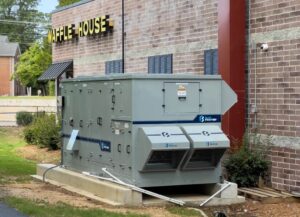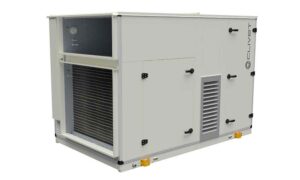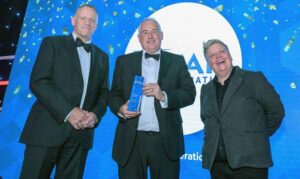AC and duct cleaning has no effect on Covid-19 spread
21st March 2020
BELGIUM: REHVA, the European Federation of HVAC associations, has advised that humidification, air conditioning and duct cleaning has no practical effect on the transmission of the coronavirus.
The information is contained in a new advisory document issued by REHVA and said to be based on current best knowledge as contained in the World Health Organisation document Getting workplaces ready for COVID-19.
Primarily intended for HVAC professionals and facility managers, the scope of the six-page document is limited to commercial and public buildings, eg offices, schools, shopping areas, sport premises, etc, where only occasional occupancy of infected persons is expected. Hospital and healthcare facilities are excluded.
Crucially, the document insists that humidification and air conditioning have no practical effect on transmission of the virus. Unlike some other viruses, SARS-CoV-2, the virus which causes the Covid-19 disease, is quite resistant to environmental changes and is susceptible only to high relative humidities above 80% and a temperature above 30˚C.
Heating and cooling systems, the document says, can be operated normally as there are no direct implications on Covid-19 spread.
In addition, the document maintains that duct cleaning is not effective against room-to-room infection.
Heat recovery
It is thought that heat recovery devices may carry over virus attached to particles from the exhaust air side to the supply air side via leaks. In rotary heat exchangers (including enthalpy wheels) particles deposit on the return air side of the heat exchanger surface after which they might be re-suspended when heat exchanger turns to the supply air side.
As a result, REHVA recommends turning off rotary heat exchangers during SARS-CoV-2 episodes. If leaks are suspected in the heat recovery sections, pressure adjustment or bypassing can be an option in order to avoid a situation where higher pressure on extract side will cause air leakages to the supply side.
Virus particle transmission via heat recovery devices is thought not to be an issue when a HVAC system is equipped with a twin coil unit or another heat recovery device that guarantees 100% air separation between return and supply side.
Recirculation
Virus particles in return ducts can also re-enter a building when centralised air handling units are equipped with recirculation sectors. So, it is recommended to avoid central recirculation during SARSCoV-2 episodes by closing the recirculation dampers.
When possible, it advises that decentralised systems such as fan coil units that use local recirculation, also should be turned off to avoid resuspension of virus particles at room level. Fan coil units have coarse filters which practically do not filter out particles with viruses. If not possible to turn off, these units are to be included into cleaning campaigns, because they might collect particles as any other surface in the room.
The document also contradicts recent assertions that duct cleaning is effective against room-to-room infection. It maintains that the ventilation system is not a contamination source if guidance about heat recovery and recirculation is followed. Viruses attached to small particles will not deposit easily in ventilation ducts and normally will be carried out by the air flow anyhow. Therefore, no changes are needed to normal duct cleaning and maintenance procedures.
REHVA represents over 120,000 HVAC designers, building services engineers, technicians and experts across 27 European countries.
Knowledge of the virus is constantly being updated, so REHVA accepts that this can be considered as interim guidance. The document may be complemented with new evidence and information when it becomes available.
The latest document and any future updates can be found here.







